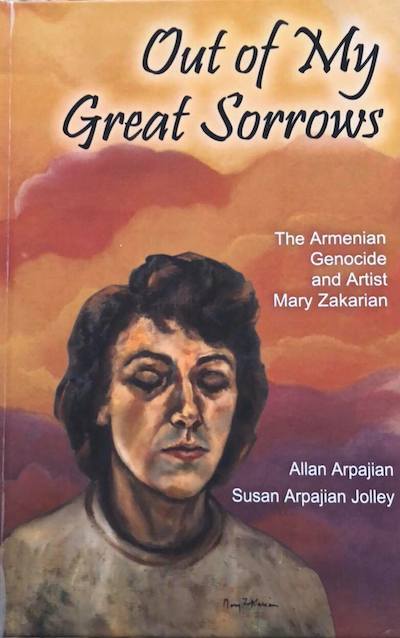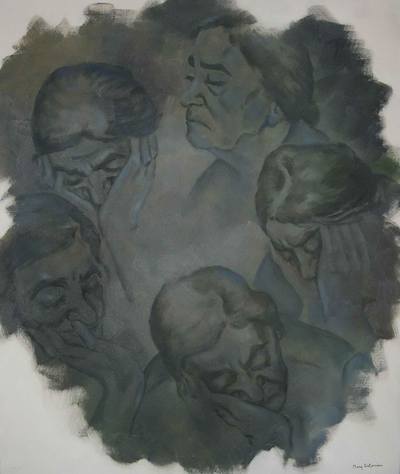|
When I began teaching high school English in 2001, many veteran
educators graciously offered me their classroom materials, their
professional and personal support, and their guidance. But no piece of
advice stands out more than the suggestion I heard most frequently: that
because educational trends, theories, and mandates come and go, I
should ignore all the noise, decide what I knew was best for my
students, and “just close the door and teach.” Doing so, as I understood
it, would be both act of self-preservation and a way to protect my
students from outside forces that were thought to have no place in the
classroom. And though I agreed with and subscribed to this advice early
on in my career, I recognized, fairly quickly, just how flawed a message
it really was—and how much of a disservice we do to teachers and
students if we ignore the ways in which social and political issues and
education are inextricably linked.
The current political climate in the United States, which has
exposed many Americans’ overt hostilities toward issues of social
justice, has compelled me to reflect even more—beyond an academic
sense—on my students’ diverse backgrounds and needs, and on the extent
to which social justice issues affect our everyday environment, and on
my own identity.
My father is, as far as he knows, of one hundred percent Irish
descent, and my mother, as far as she knows, is of one hundred percent
Armenian descent. Since both these ethnicities have embedded in their
genes legacies of historical injustice and oppression, I am particularly
attuned to these matters—but it is the Armenian side that is occupying
my thoughts, these days, since my mother, Susan Arpajian Jolley, and my
uncle, her brother, Allan Arpajian have published an incisive and moving
account of the Armenian situation in a book entitled Out
of My Great Sorrows: The Armenian Genocide and Artist Mary
Zakarian (Routledge, 2017).

The book’s cover art is Mary’s self-portrait.
Mary Zakarian is my great aunt, my grandmother’s sister:
practically part of my immediate family. This book, which combines
biography, history, and memoir, has given me new insight into the
painful legacy of the Armenian people, who to this day are seeking
justice for, and acknowledgement of, a genocide perpetrated a hundred
years ago in the Ottoman Empire. As the authors, Arpajian and Jolley,
write in the introduction to their book, “the political and
psychological effects of this event remain an open wound to descendants
of both victims and perpetrators despite the passage of time” (xv). Lest
anyone question why a hundred-year-old event has significance to us
today, consider this 1939 statement by Hitler to his generals,
justifying the invasion of Poland: “Accordingly, I have placed my
death-hand formations in readiness—for the present only in the East—with
orders to them to send to death mercilessly and without compassion,
men, women, and children of Polish derivation and language. Only thus
shall we gain the living space (Lebensraum) which we need. Who,
after all, speaks today of the annihilation of the
Armenians?” (Berger, 2002, p. 166, emphasis added) To this
day, the Armenian Genocide remains unacknowledged by the Turkish
government (Hovannisian, 2003, p. 2), and this is precisely the reason
why we must actively seek to identify and prevent injustice on a global
scale.
For those who are unfamiliar, the Genocide of 1915 was an
instance of ethnic cleansing in which a million and half Armenians were
either murdered, tortured, and sent on death marches into the Syrian
desert, at the direction of the Ottoman regime (Peroomian, 2012). The
political situation at the time was complex, as the Ottoman Empire was
crumbling, World War I was breaking out, and nationalism was on the rise
world-wide. (For a comprehensive explanation of the situation see
Akçam, 2006.) But Arpajian and Jolley distill the
situation into understandable terms for non–historians, and also explain
how easily, under certain conditions, injustices of the worst sort can
be perpetrated.

Zakarian considered “My Mother’s Endless Lament” (oil
on canvas, early 1970s), which represents the never-ending suffering of
the genocide survivor, to be her most important work.
At the heart of this book is the legacy of trauma. My great
grandmother, Mary’s mother, Arek Zakarian, suffered unimaginable losses
and abuse from the time of the genocide, in 1915, until she was able to
find safe passage to the United States in 1923. During those eight long
years, Arek witnessed the murder of her husband and the beheading of her
two small sons, ages two and four. She wandered through a wasteland,
subjected, as are all women in genocide, to sexual abuse. It is no small
victory that she survived and was able to remarry in America and raise a
second family. While Out of My Great Sorrows devotes
one chapter to Arek’s story, and another to my great grandfather, Moses
Zakarian, who suffered his own losses, the focus remains on Mary, a
sensitive child who grew up under the shadow of the Genocide and her
mother’s suffering. As the book explains, posttraumatic stress disorder
affects not only the survivor or trauma, but also succeeding
generations. While Arek remained largely silent about her experiences,
her children inherited her trauma nevertheless. The authors cite the
chapter from Plight and Fate of Women During and Following
Genocide in which Rubina Peroomian states that horrifying
memories “remain alive in the next generation and the one after that”
(18).
While Out of My
Great Sorrows examines Mary Zakarian’s artistic development
and showcases her powerful portraits of her parents and her vibrant
still life studies, it is the examination of Mary’s psyche that is most
compelling. In Philadelphia during the Great Depression, she and her
family suffered not only monetary poverty but also psychological
difficulties brought on by the fact that they were refugees of war and
genocide. Mary herself experienced survivor guilt, the feeling that her
own pleasure and happiness was a betrayal to her mother’s pain. She
harbored ambivalent feelings about her mother, which led her to question
her own worth and her religious faith. She had difficult relationships,
suffered from agoraphobia, hypochondria, and generalized anxiety. All
these conditions are symptoms of PTSD, and not unlike symptoms of actual
survivors.
Nevertheless, Mary was a successful artist and beloved teacher.
Formally trained at Moore College of Art and Design and Pennsylvania
Academy of Fine Arts, she started her own art school, the Zakarian
School of Art, in her studio in Philadelphia in 1971. She exhibited her
work on the east coast and sold hundreds of paintings in her lifetime.
Later in her life, she became an advocate for genocide awareness,
speaking on the topic and relating her family’s story and its
psychological impact on her art. While her successes were gratifying,
she remained mired too much of the time in depression and anxiety. The
authors of Out of My Great Sorrows are clear in
explaining that one cause of Mary’s difficulties was her innate
temperament, but that much can also be attributed to the unresolved
issues of oppression, injustice and grief of the Armenian
people.
Mary specialized in portraits of oppressed, marginalized, and
disenfranchised people. Leaving this legacy in her art clearly shows her
own concern with social justice. As the authors write in a chapter
entitled “Celebrating Everyman, “She portrayed a virtual rainbow of
humanity…Her art expresses the transience of earthly life and yet the
simultaneous permanence of the spirit” (166). Their last chapter
evaluates the role of tragedy and trauma on her work: “The Armenian
Genocide, the propulsive force at the source of Zakarian’s art, is a
psychic wound that will not heal…But the catastrophe—not just of 1915
but the entire history of this ‘nation’—like anything negative in human
experience, is both a destroyer and a creator. An oppressed and
victimized group’s wish, whether conscious or not, is that the suffering
endured will make them greater than they would have been in its
absence...This, in a nutshell, is tragedy on the vast stage of history.
Man is beaten but is somehow superior to the forces that have brought
him down” (183).
Needless to say, I have known my Aunt Mary all my life—and the
primary identity I will always assign to her is that of a loving aunt.
However, this book has helped me understand her, my family, and the
legacy of people who have suffered massive injustice. Perhaps most
importantly, it has served as a reminder that we cannot successfully
educate our children if we “just close our doors” to the injustice that
plagues our world. By studying the psychology of survivors of trauma,
whether they be Armenian, African American, Irish, Jewish, or any of the
myriad other ethnicities who have suffered oppression and injustice,
educators and students can gain understanding of other people and of the
world—and we, as educators, can better understand our students, their
diverse needs, and the critical place that issues of social justice have
in our classrooms. In this regard, Out of My Great Sorrows:
The Armenian Genocide and Artist Mary Zakarian can aid us in
the pursuit of social justice.
References
Akçam, T. (2006). A Shameful Act: The Armenian Genocide and the Question of Turkish Responsibility. New York, NY: Metropolitan Books.
Arpajian, A. & Jolley, S.A. (2016). Out of My
Great Sorrows: The Armenian Genocide and Artist Mary Zakarian. New Brunswick (USA) and London (UK): Transaction Publishers.
Berger, R.J. (2002). Fathoming the Holocaust: A Social Problems Approach. New Brunswick (USA) and London (UK): Transaction Publishers.
Hovannisian, R.G. (2003). Confronting the Armenian Genocide. In R.G. Hovannisian (Ed.), Looking Backward, Moving Forward (pp. 1-7). New Brunswick (USA) and London (UK): Transaction Publishers.
Peroomian, R. Women and the Armenian Genocide. (2009). In Totten, S. (Ed.), Plight and Fate of Women During and Following Genocide (pp. 7-24). New Brunswick (USA) and London (UK): Transaction Publishers.
Ani McHugh is a high school English teacher in Delran,
New Jersey. She holds a B.A. in English from Ursinus College and an
M.Ed. from East Stroudsburg University. |

